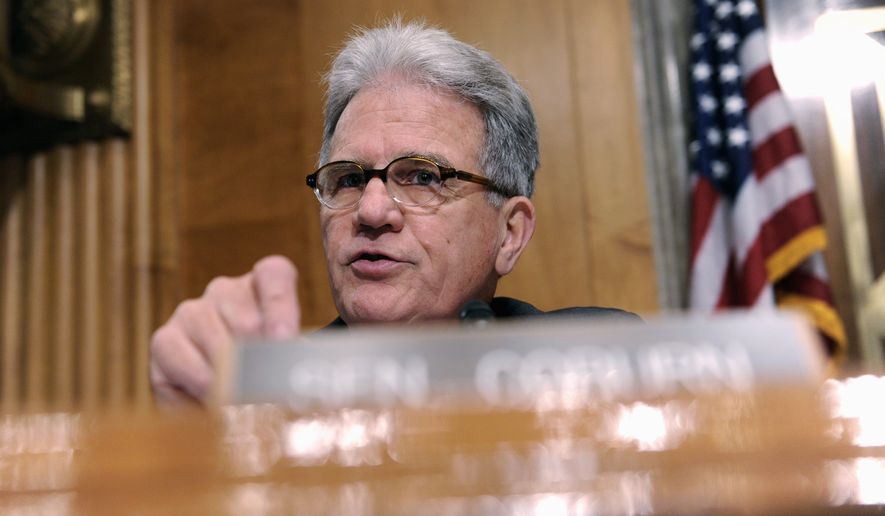One veteran on disability collected nearly $210,000 in benefits in 2013, while another earned more than $122,000 — nearly three times what his actual military pay would have been — according to a watchdog report being released Thursday that found tens of thousands of veterans are triple-dipping on disability.
Tens of thousands of veterans collect their military retirement pay and disability benefits from the Veterans Administration and disability checks from Social Security too, according to a new report from the Government Accountability Office. All told, nearly 60,000 triple dippers collected $3.5 billion in benefits.
The arrangement is legal, but it raises questions about the generosity of the American safety net system at a time when disability programs are already under severe financial stress.
“This report shows that, like other government programs, there is little coordination between these overlapping benefits, which increase cost[s] to taxpayers,” said Sen. Tom Coburn, the Oklahoma Republican who requested the GAO report. “We should fulfill our promises to the men and women who serve, but we need to streamline these duplicative programs.”
For decades, up until 2004, the government clamped down on veterans taking both military retirement pay and VA disability benefits. The Pentagon docked retirement pay dollar for dollar up to the amount of their VA benefits.
But veterans groups argued that vets should be entitled to both payments, saying the retirement money was earned for years of service, while disability is compensation for service-related wounds.
Under an intense lobbying campaign, Congress changed the law so that, beginning in 2004, vets were gradually allowed to collect both checks — though there are regular rumblings proposing to undue the 2004 change.
Social Security disability, however, is different.
Most Americans aren’t able to collect Social Security disability payments if their income is at least $13,000 a year. But Social Security rules don’t treat military retirement or VA disability payments as regular income, which means veterans can collect tens of thousands of dollars from the Pentagon and VA and still get money from Social Security.
Mr. Coburn said taxpayers should find that “hard to understand.”
“With the Social Security Disability Insurance trust fund set to run out of money in two years, the report raises a number of questions about whether disability benefits are getting to those whose livelihoods depend on them,” the senator said.
In an official reply to the GAO, the VA said it “generally agrees” with the report’s conclusions. Social Security officials had no comment.
Social Security’s disability trust fund is expected to run out of money in 2016, and some lawmakers believe that cracking down on double dippers could help extend the program’s life somewhat.
About 3 percent of military retirees collect all three benefits right now, GAO investigators said. Most of them have a VA disability rating of 50 percent or higher, though just 17 percent of the disabilities are combat-related.
Of the $3.5 billion spent in 2013 on the triple dippers, $1.4 billion came from the VA, $1.2 billion came from the Pentagon, and $937.4 million came from Social Security.
As for the individual veterans, the GAO identified 101 who earn more than $150,000 a year in triple-dip benefits. Another 2,200 veterans earn between $100,000 and $150,000.
Investigators pulled seven cases at different benefit levels for further study, and in all but the lowest two, the veterans were making more as retired disabled than their salaries would have been if they’d still been in the service.
A 54-year-old who retired in 1997 after 20 years in the military, who had lung disease, vascular disease and lost use of his feet, collected $122,887 in benefits in 2013 — nearly three times the $43,808 someone of his pay grade would have made in the military.
Meanwhile, a 59-year-old who retired in 2004 after 26 years, who lost his feet, is blind in one eye and has renal problems, collected $152,719 in 2013 — more than twice the $72,824 salary of someone at his final military pay grade. Most of his benefits — $85,958 — came from VA disability, while $46,396 was military retirement, and $20,365 was from Social Security.
• Stephen Dinan can be reached at sdinan@washingtontimes.com.




Please read our comment policy before commenting.